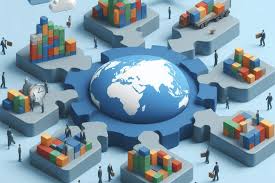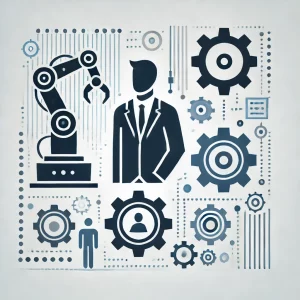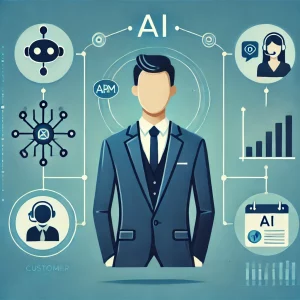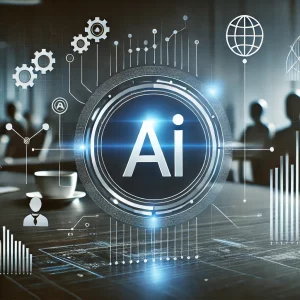The Impact of AI on Business Automation
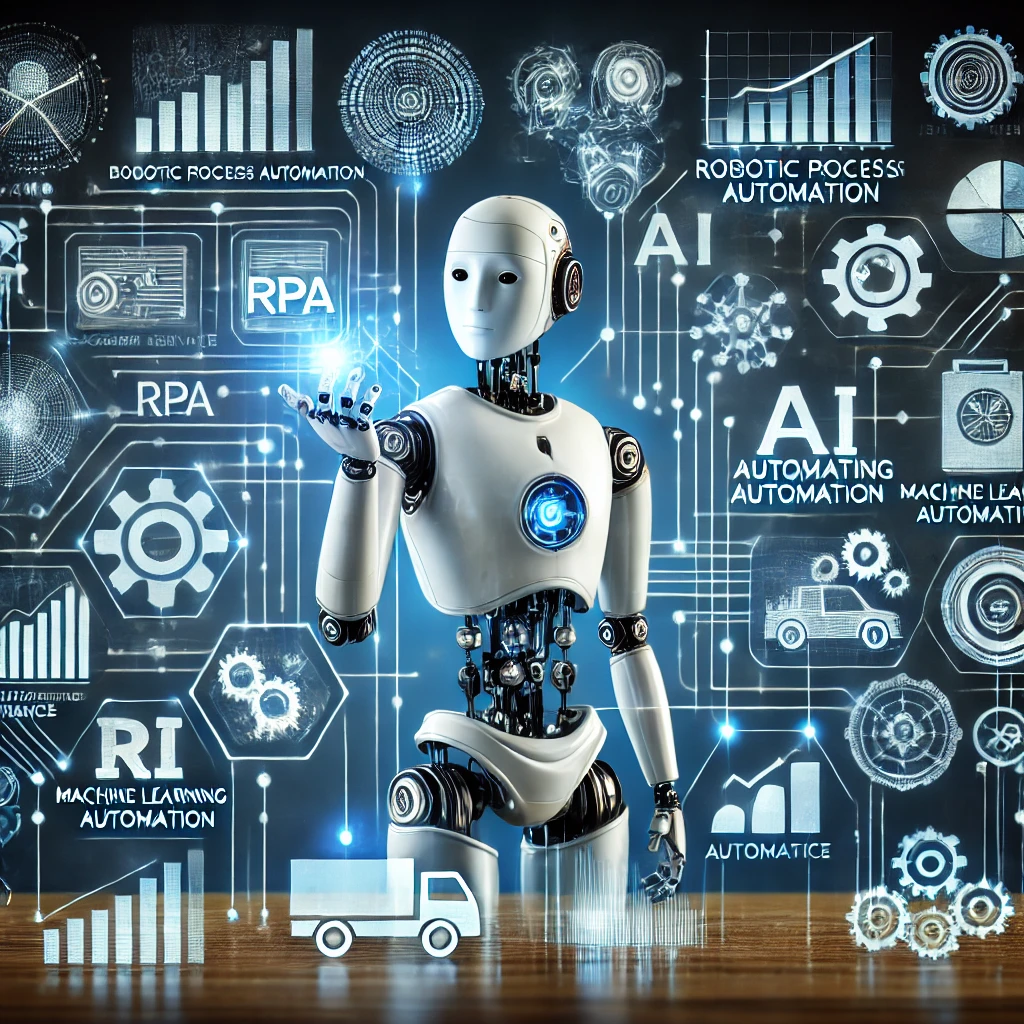
Artificial Intelligence (AI) is revolutionizing how businesses operate by automating tasks, enhancing productivity, and enabling smarter decision-making. Business automation, powered by AI, is no longer limited to just routine or repetitive tasks. Instead, AI now plays a pivotal role in transforming every aspect of a business, from customer service to supply chain management, from marketing to human resources. The adoption of AI-driven automation is accelerating, with companies increasingly recognizing its potential to enhance efficiency, reduce costs, and stay competitive in a rapidly evolving digital economy.
In this article, we will explore the impact of AI on business automation, the key areas where AI is making a difference, and the benefits and challenges associated with this transformation.
The Role of AI in Business Automation
AI-powered automation refers to the use of AI algorithms and technologies to streamline and automate business processes. Unlike traditional automation, which relies on predefined rules and workflows, AI-driven automation is more dynamic and intelligent. It can analyze data, learn from patterns, and make decisions in real time. As AI systems become more advanced, they can handle increasingly complex tasks, allowing businesses to focus on innovation and strategic growth.
Key Components of AI-Driven Business Automation
- Machine Learning (ML): ML algorithms can analyze large datasets, identify patterns, and make predictions. In business automation, ML is used to automate decision-making processes, optimize workflows, and improve forecasting accuracy.
- Natural Language Processing (NLP): NLP enables machines to understand, interpret, and respond to human language. This technology powers chatbots, virtual assistants, and other automated customer service tools that can handle customer inquiries without human intervention.
- Robotic Process Automation (RPA): RPA involves the use of software robots to automate repetitive tasks, such as data entry, invoice processing, and order fulfillment. When combined with AI, RPA becomes more intelligent, enabling it to handle tasks that require decision-making and adaptability.
- Computer Vision: AI-driven computer vision allows machines to interpret and analyze visual data, making it possible to automate processes like quality control in manufacturing or document verification in finance.
The Impact of AI on Key Business Areas
AI-driven automation is transforming various business functions, offering new opportunities for efficiency, accuracy, and scalability. Below are some of the key areas where AI is making a significant impact:
1. Customer Service and Support
One of the most visible areas of AI-powered automation is customer service. AI chatbots and virtual assistants are being widely adopted to handle customer queries, process orders, and provide support around the clock. These systems use NLP to understand customer inquiries and respond in real time, reducing the need for human agents in handling basic or repetitive tasks.
For example, companies like Amazon and Microsoft use AI-driven chatbots to manage customer support queries, enhancing customer experience by providing instant responses. Additionally, AI systems can analyze customer interactions to provide personalized recommendations, improving customer satisfaction and engagement.
2. Sales and Marketing
AI is transforming sales and marketing by automating processes such as lead generation, customer segmentation, and personalized marketing campaigns. Machine learning algorithms analyze customer behavior and preferences to predict future buying patterns, enabling businesses to tailor their marketing efforts accordingly.
AI can also automate the creation of marketing content, optimize ad placements, and analyze campaign performance in real time. Tools like Salesforce’s AI-powered Einstein can identify potential sales opportunities and provide insights to sales teams, helping them close deals more efficiently.
3. Human Resources
In HR, AI is being used to automate tasks like recruitment, onboarding, and employee performance evaluation. AI-powered tools can screen resumes, schedule interviews, and even conduct initial assessments of candidates, reducing the time and effort required by human recruiters.
For instance, platforms like Workday use AI to analyze employee data and provide insights into workforce trends, helping HR managers make informed decisions about talent management and employee engagement. AI also aids in detecting bias in recruitment, ensuring that hiring decisions are based on merit rather than unconscious bias.
4. Supply Chain Management
AI-driven automation is streamlining supply chain operations by improving demand forecasting, inventory management, and logistics planning. Machine learning models can analyze historical data to predict future demand, enabling businesses to optimize inventory levels and reduce waste.
AI systems can also automate order fulfillment and route optimization for deliveries, ensuring faster and more cost-effective logistics operations. For example, AI-powered automation tools are used by companies like DHL and Amazon to manage their vast supply chains efficiently and meet customer demands promptly.
5. Finance and Accounting
In finance, AI is transforming traditional accounting and financial processes. AI-powered tools can automate tasks such as invoice processing, expense tracking, and financial reporting, reducing the risk of errors and increasing accuracy.
AI algorithms can also analyze financial data to detect fraud, identify trends, and provide actionable insights for decision-makers. In investment management, AI-driven robo-advisors are automating the process of portfolio management, offering personalized financial advice and optimizing investment strategies based on real-time data analysis.
6. Manufacturing and Operations
AI is revolutionizing manufacturing through automation in areas such as production line optimization, predictive maintenance, and quality control. AI-powered robots can perform tasks such as assembling products, welding, and packaging with greater precision and speed than human workers.
Predictive maintenance, enabled by AI and IoT, allows manufacturers to monitor equipment performance in real time and predict when machines are likely to fail. This reduces downtime and maintenance costs while ensuring continuous production.
The Benefits of AI-Driven Business Automation
AI-powered automation offers numerous benefits for businesses, including:
- Increased Efficiency: AI can perform tasks faster and more accurately than humans, reducing the time and effort required for manual processes.
- Cost Savings: By automating repetitive tasks, businesses can reduce operational costs, minimize errors, and eliminate the need for additional labor.
- Scalability: AI systems can handle large volumes of data and processes without compromising on accuracy or speed, enabling businesses to scale operations quickly.
- Enhanced Decision-Making: AI-powered analytics provide businesses with real-time insights, helping decision-makers make informed choices based on data rather than intuition.
- Improved Customer Experience: AI-driven tools like chatbots and virtual assistants can provide instant responses and personalized interactions, improving customer satisfaction and loyalty.
Challenges of AI-Driven Business Automation
While the benefits of AI-driven automation are significant, there are also challenges that businesses must address:
- Data Privacy and Security: The widespread use of AI requires businesses to handle large amounts of data, raising concerns about data privacy and security. Businesses must ensure that AI systems comply with data protection regulations and safeguard sensitive information.
- Job Displacement: As AI automates more tasks, there is a growing concern about job displacement, particularly in industries that rely heavily on manual labor. Businesses need to find ways to upskill and reskill workers to adapt to the changing job market.
- Ethical Considerations: The use of AI in decision-making processes raises ethical questions, such as bias in AI algorithms and the transparency of AI-driven decisions. Businesses must ensure that their AI systems are fair, transparent, and accountable.
- Integration and Implementation: Implementing AI-driven automation can be complex and expensive. Businesses must invest in the right infrastructure, talent, and technologies to successfully integrate AI into their operations.
Conclusion
The impact of AI on business automation is undeniable. As AI continues to evolve, its ability to automate tasks, enhance efficiency, and provide real-time insights will transform industries across the board. From customer service to manufacturing, AI-driven automation is reshaping how businesses operate and compete in the digital age. While there are challenges associated with the widespread adoption of AI, the benefits far outweigh the drawbacks. As businesses continue to embrace AI-driven automation, they will unlock new opportunities for growth, innovation, and success.
